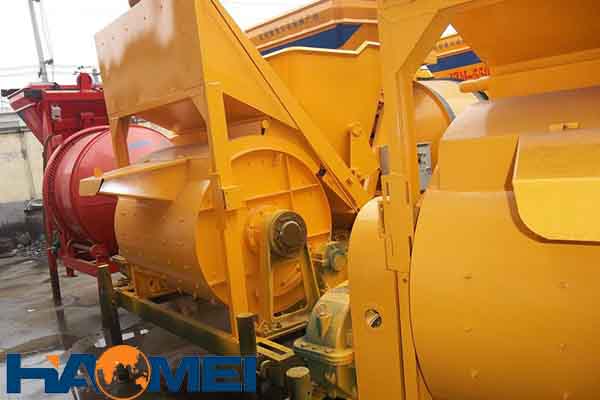Models of compulsory concrete mixer
The compulsory concrete mixer refers to a new type of mixer in comparison to self-falling mixers. The mixing drum of the forced mixer is fixed, but the blades are rotated by the blades on the inner shaft of the cylinder to stir the material (the mixing drum and the blades are rotated relative to each other to force the mixing), and the stirring effect is strong. Its models include JS500, JS750, JS1000, JS1500, JS2000, JS3000 and JS4000.

These are regular models for compulsory concrete mixers, and different companies may have varied naming habits. In “JS500”, the letter “J” refers to compulsory, “S” twin shafts and “500” refers to tank volume of the mixer. Other models have the same meanings. The productivity of JS500 is 20 to 25 cubic meters per hour, JS750 30 to 35 cubic meters, JS1000 50 to 60, JS1500 60 to 75, JS2000 100 to 120, and JS3000 150 to 180 cubic meters per hour. They can be used independently or as the mixing unit for stationary and mobile concrete batching plants of the same capacities.
Whatever model it is of, a compulsory concrete mixer is used to mix half dry and light concrete materials that are difficult to be mixed by self-falling mixers. Featured by short mixing time and high productivity, it has a flexible control system that helps to discharge concrete completely and quickly. The rotating blades are capable of crushing the material into a block, so it is most suitable for mixing mortar. Its drums and blades wear faster, and are mostly used for concrete with aggregates below 25 mm. If coarse aggregates are mixed, the blades will be quickly abraded and easily inserted between the blades and the drum wall. This shortcoming of a compulsive concrete mixer needs to be further improved from the aspects of steel and construction.
Reprinted from http://www.haomei-machine.com/news/technologynews/compulsory-concrete-mixer-models.html
评论
发表评论